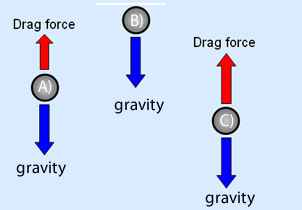Terminal velocity
An object is moving at its terminal velocity if its speed is constant due to the restraining force exerted by the air, water or other fluid through which it is moving.
A free-falling object achieves its terminal velocity when the downward force of gravity equals the upward force of drag . This causes the net force on the object to be zero, resulting in an acceleration of zero.
Initially the object accelerates, as the speed of the object increases, the drag force acting on the object also increases causing the acceleration to decrease. At a particular speed, the drag force produced by the object will equal the object's weight. At this point the object ceases to accelerate and continues falling at a constant speed called terminal velocity. Click to see a pictorial explanation.

Terminal velocity varies directly with the ratio of weight to drag. More drag means a lower terminal velocity, where as increased weight means a greater terminal velocity. Skydivers sometimes go into a tuck position and fall faster than if they had their feet and arms outstretched. Velocity increases to a greater terminal velocity due to the reduction of drag forces acting on the skydiver.
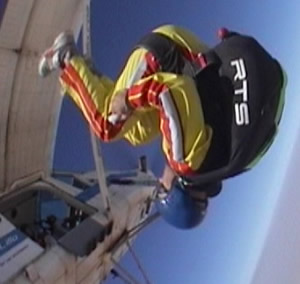
Consider a meteor entering the Earth's atmosphere. It's speed downward is greater than its terminal velocity due to the Earth's gravitational pull and the thinner atmosphere at greater heights. The meteor will decelerate until it reaches terminal velocity and a great deal of its energy is given off as heat.
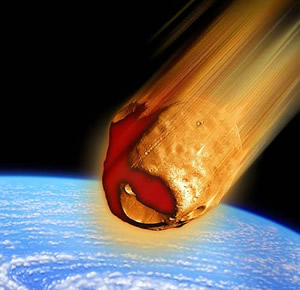
A skydiver jumps from a plane. Which comment is true? Explain why.
What factors determine the terminal velocity an object can reach on Earth?
What happens when a skydiver stretches their arms and legs out as shown on the right?

The graph on the right shows the speed of a particular object falling from a stationary position in the atmosphere of planets A and B.
Which planet has the thickest atmosphere? How can you tell?
What two forces are acting on the object?
What is the terminal velocity of the object on planets A and B?
How would the speed vs time graph be different on planet A for an object twice the density of the original object?
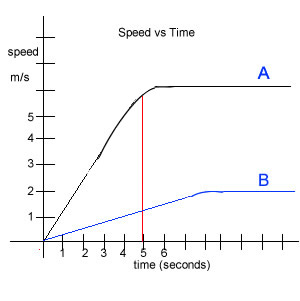
The graph on the right shows the speed of a particular object falling from a stationary position in the atmosphere of planets A and B.
What most likely happened to the object falling in the atmosphere of planet B to give the speed vs time graph shown.
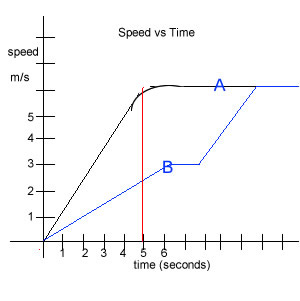
The graph on the right shows the speed of two spherical meteors with the same radius entering the atmosphere of planets A and B.
Which planet has the thinnest atmosphere? Explain
What is the speed of entry of both meteors?
Describe one difference between the meteors that might account for the difference in the shape of the graphs.
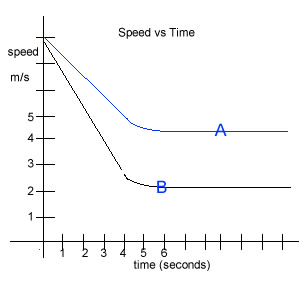
An object is dropped from rest and allowed to fall to the ground through the atmosphere. As mentioned above terminal velocity occurs when the force of gravity and the force of drag are equal and acting in the opposite direction. When the forces are unbalanced the object will accelerate in the direction of the greater force. Which of the following positions, pictured on the right, best describe the situation below.
The object has just being released
The object is accelerating towards the ground
The object has reached terminal velocity
